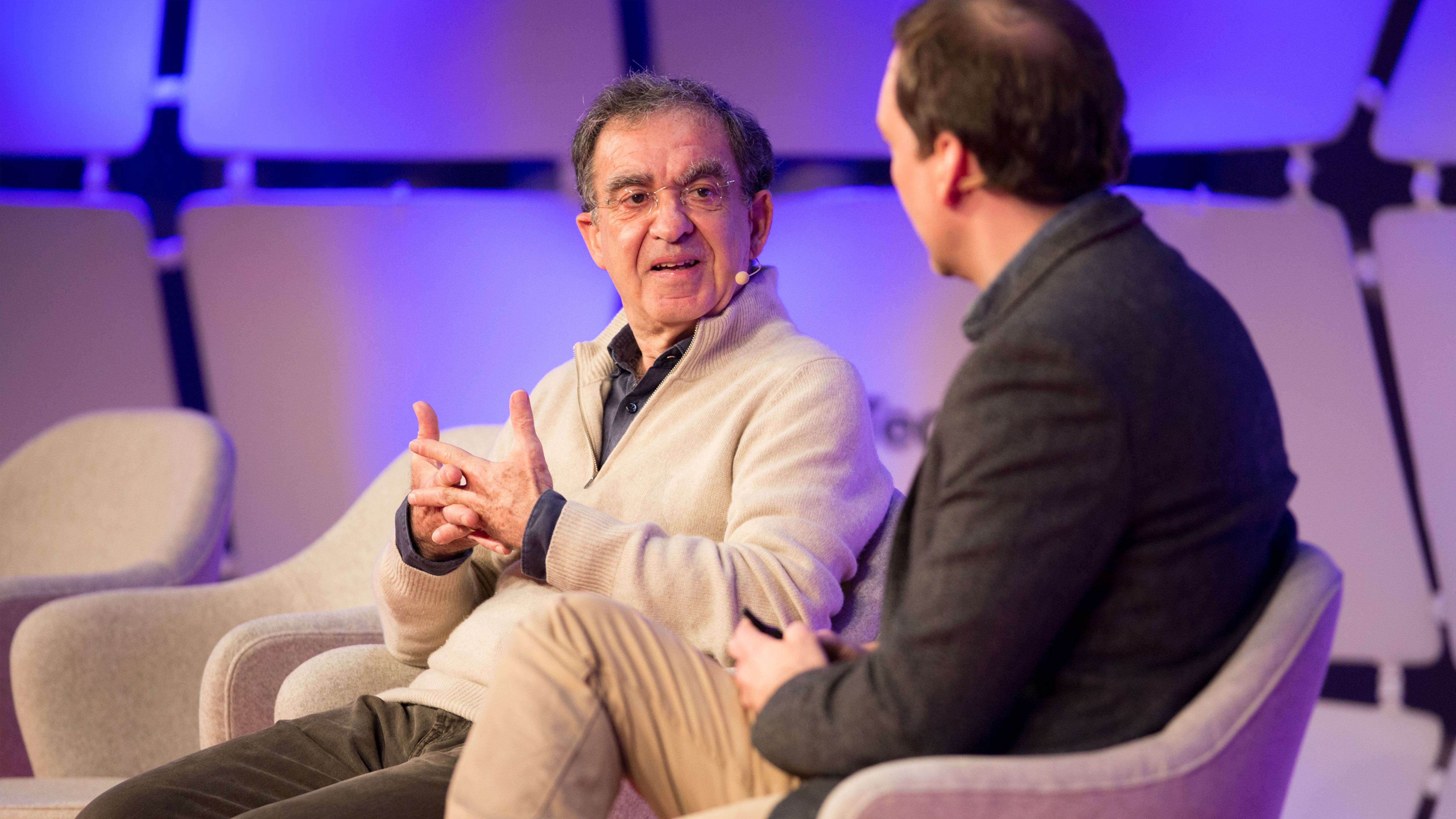Despite All Our Fancy AI, Solving Intelligence Remains “the Greatest Problem in Science”

Recent advances that let computers play board games and drive cars haven’t brought the world any closer to true artificial intelligence.
That’s according to Tomaso Poggio, a professor at the McGovern Institute for Brain Research at MIT who has trained many of today’s AI leaders.
“Is this getting us closer to human intelligence? I don’t think so,” the neuroscientist said at MIT Technology Review’s EmTech conference on Tuesday.
Poggio leads a program at MIT that’s helped train several of today’s AI stars, including Demis Hassabis, cofounder of DeepMind, and Amnon Shashua, cofounder of the self-driving tech company Mobileye, which was acquired by Intel earlier this year for $15.3 billion.
“AlphaGo is one of the two main successes of AI, and the other is the autonomous-car story,” he says. “Very soon they’ll be quite autonomous.”
But Poggio said these programs are no closer to real human intelligence than before. Responding to a warning by physicist Stephen Hawking that AI could be more dangerous than nuclear weapons, Poggio called that “just hype.”
Poggio was in Seoul when DeepMind’s Go-playing software, AlphaGo, beat some of the top human players of the ancient board game. “And their building is not going up in fire,” he commented. “These systems are pretty dumb.”
Specialized forms of computer intelligence aren’t new. Computers overtook humans at making mathematical calculations in the 1950s, Poggio notes.
He says no one knows how to make a broader general intelligence, like what humans have, and you can’t do it by “gluing together” existing programs that play games or categorize images.
Put another way, a self-driving Go player would bring us no closer to a “general” AI, or one that can think for itself and solve many kinds of novel problems. “We have not yet solved AI by far. This is not intelligence,” says Poggio.
Poggio thinks the next AI breakthroughs are going to come from neuroscience, something he works on as head of a 10-year, $50 million program called the Center for Brains, Minds, and Machines, which is exploring how the brain creates human visual awareness.
“I personally think the problem of intelligence is the greatest problem in science,” says Poggio. “But to believe we can solve the greatest of all problems in the next few weeks or months is a bit too ambitious.”
Keep Reading
Most Popular
Large language models can do jaw-dropping things. But nobody knows exactly why.
And that's a problem. Figuring it out is one of the biggest scientific puzzles of our time and a crucial step towards controlling more powerful future models.
The problem with plug-in hybrids? Their drivers.
Plug-in hybrids are often sold as a transition to EVs, but new data from Europe shows we’re still underestimating the emissions they produce.
Google DeepMind’s new generative model makes Super Mario–like games from scratch
Genie learns how to control games by watching hours and hours of video. It could help train next-gen robots too.
How scientists traced a mysterious covid case back to six toilets
When wastewater surveillance turns into a hunt for a single infected individual, the ethics get tricky.
Stay connected
Get the latest updates from
MIT Technology Review
Discover special offers, top stories, upcoming events, and more.